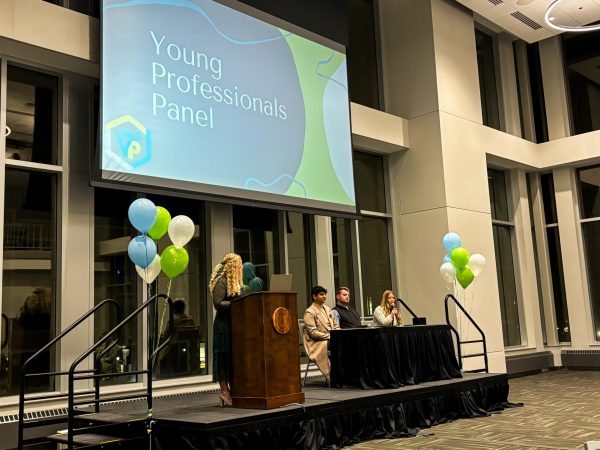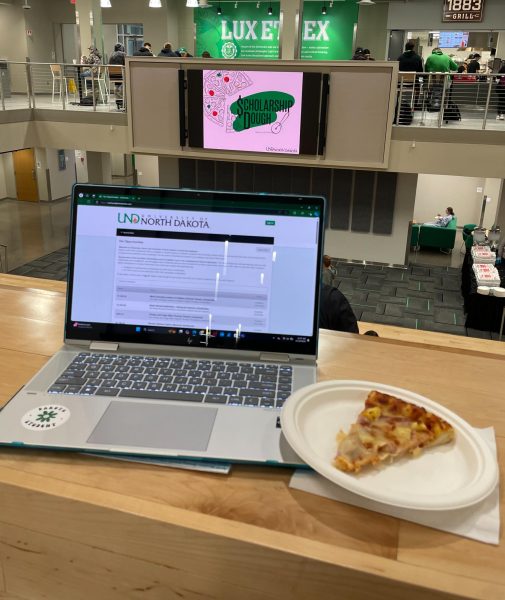Music Therapy pushes back

Photo courtesy of arts-sciences.und.edu
UND music therapy students continue to protest the suspension of their program.
UND Interim President Ed Schafer said in a University Senate meeting last month that departments are responsible for making their priorities known to the administration.
However, a couple days later, the school administration reaffirmed its stance on suspending the music therapy program, despite the music therapy program being identified as a top priority by the music department.
Jenna Tullis, the President of AMTAS, UND’s music therapy student organization, is concerned for the priorities of other departments facing budget cuts.
“If the administration can come into our department and completely disregard what our top priority is and cut our program, who’s to say that they aren’t going to start doing this to other departments,” Tullis said.
Due to North Dakota’s decreased revenue forecast, Gov. Jack Dalrymple said all state agencies would have to cut 4 percent from their budgets.
Last month, the State Board of Higher Education approved tuition increase rates of 2.5 percent for the 2016-17 academic year which should alleviate some of the university’s financial stress.
To deal with the budget cuts, Schafer announced a bottom-up process of submitting departmental budgets cutting both 5 and 10 percent that would be passed up to respective deans and finally on his desk for a final decision around April 15.
“We just met with the provost and it’s good to have talked with him,” Tullis said.
“Until a final decision has been made, we’re going to do everything we can, respectfully and honestly to fight the good fight.”in the program.
The UND music department worked with two consultants in 2014 to identify the department’s strategic priorities. Both of these consultants identified music therapy as the department’s top priority.
As a result of those visits, music therapy was identified as the department’s top priority in a report to Dean Storrs. The music department provided Storrs with the required 95 percent and 90 percent budgets, neither of which included the suspension of the music therapy program.
Storrs did not accept either plans. Music therapy is the only undergraduate program identified for suspension in Storrs’ budget plans.
UND music therapy majors have a 100 percent pass rate on their national board exams needed for certification. The average pass rate for undergraduate music therapy programs across the country is 76 percent. Graduates also have a 100 percent job placement rate, with eleven alumni currently working in North Dakota.
Some pundits say the music therapy program has been a revolving door of tenure track faculty members. UND music therapy faculty have stayed at UND for an average of 7.3 years. The national average according to the Bureau of Labor Statistics is 4.9 years. In comparison, from 2008-2014, the College of Arts and Sciences went through three deans in six years.
Tullis believes the music therapy program is crucial to the music department’s recruiting efforts, in particular out-of-state and Canadian students. It is the only music therapy program in North Dakota, South Dakota, Montana, and the only public university option for Minnesota residents. More than 50 percent of the music therapy program is comprised of out-of-state students.
As the first state to pass licensure, North Dakota is a leader in the field of music therapy, with 80 percent of the music therapists in North Dakota receiving their training at UND.
Chris Feldmann, a music education major at UND, recalls the day he found out the program was getting suspended.
“The music therapy majors had a meeting and nobody knew what it was about,” Feldmann said. “We thought it was about (Meganne) Masko leaving. The next day I’m going to choir and I saw a bunch of my friends coming out bawling their eyes out, saying that the professors told them the therapy program was in danger of being suspended.”
Music therapy majors at UND must be understanding of both liberal arts and science courses.
“It’s an impressive study. That’s the thing that I think a lot of people don’t understand,” Feldmann said.
Within a four-year plan, music therapy majors will take anatomy, sociological statistics and multiple psychology classes while being well-versed in music theory and music therapy practices.
Currently, 80 percent of all licensed music therapists working in North Dakota graduated from UND.
Nick Sallen is the opinions editor for he Dakota Student. He can be reached at [email protected]










